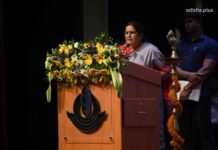Pradeep Kumar Panda

Recently Odisha Government has announced to recognize Cuttack’s ‘Bali Jatra’ as a state-level festival. Bali Jatra, meaning ‘A voyage to Bali’, is a seven-day trade fair that is organised every year in the Hindu month of ‘Kartik’ (October – November) on the Mahanadi river bed in Cuttack.Said to be the state’s oldest trade fair, it is linked with glorious maritime history of Odisha.
In the maritime history of India, Odisha played a significant role in spreading Indian culture to other parts of the world, including Africa, Rome and Southeast Asia. Archaeological findings, explorations and excavations at various sites, epigraphical and numismatic evidences of different periods, and literary records, enabled the reconstruction of the maritime history of Odisha. Various studies have been conducted to trace the nature of trade and cultural contacts between Odisha and other countries of the world from various sources. Besides attacks by neighbouring kingdoms and unsound economic condition, the geological processes like tectonic activities, sea level changes and sedimentation were also equally responsible for the decline of ports of Odisha.

The Maritime history of Odisha started before 350 BC according to early sources. The people of this region of eastern India along the coast of the Bay of Bengal sailed up and down the Indian coast, and traveled to Indo China and throughout Maritime Southeast Asia, introducing elements of their culture to the people with whom they traded. By 400 AD, Odisha was the hub of a trade network that stretched from the Roman Empire to China.
At one time the Bay of Bengal was known as Kalingodra, or the sea of Kalinga, due to the dominance of Oriya ships. The old traditions are still celebrated in the annual Bali Jatra, or Boita-Bandana festival held for five days in October / November. However, the maritime traditions are preserved in the cultural festivals of Odisha, which are celebrated as commemorative traditions.The available sources such as the epics, Jataka stories, Raghuvamsa, Kathasaritasagar, inscriptions, and excavated antiquities bring to light the trade and cultural contact of Odisha with distant overseas countries through the ages.
In spite of several hazards and the problem of piracy the Odishan seafarers undertook maritime trade for the sake of wealth. The archaeological findings at Sisupalgarh, Manikapatna, Palur shows that trade was flourishing till the Gupta period. As archaeological evidence is not found during the post Gupta period (6th -7th century A.D.) it appears that there was a decline of maritime trade through Odisha in this time. However, maritime trade revived during the Bhaumakara period and it flourished again after 10th and 11th century. The excavation at Manikapatna has brought to light pottery of both indigenous and foreign origin. Along the east coast of India Manikapatna is the only site from where varieties of ceramics have so far been reported. The presence of pottery, coins, and art evidence indicates the impact of early sea trade between Odisha and the Mediterranean world.

The discovery of Rouletted Ware all along the east coast of India and Kharoshthi scripts and semiprecious stone beads suggests that the internal contact between Odisha, Bengal, Assam, Tamil Nadu had already began by about 2000 years ago. The evidence from Manikapatna proves the East and West maritime trade relations. With the increase of Roman influence along the Indian coast, the Indian traders left for, Southeast Asia countries in search of spices and sandalwood. Based on the available references and archaeological findings at Odisha, Southeast Asian countries, and other places, it is clear that the sailors knew about these lands and the products.
It is worth mentioning here that historians have believed the weak successors, economy under the feudatories, attack by neighbouring kingdoms, imposition of taxes, and unskilled navigation contributed to the decline of maritime activities of Odisha. In addition to this it is noticed that the geological processes such as the coastal erosion, sea level changes, tectonic activities, natural hazards, sedimentation, and formation of sand bars and dunes in the navigational channels are equally responsible for the decline of ports of Odisha. It is known that Balasore and Konark were the ancient ports, which are presently 15 and 4.8 km away from the seashore respectively. It is stated that this is due to the uplift of land. Chilka was a busy port in the historical times and sedimentation caused the disuse of the port.
The diversion of river course due to the formation of sand dunes made the Palur port non-operational. To understand in detail the geological processes from archaeological point of view no systematic studies have been carried out along the coast of Odisha. The coastal survey and offshore explorations at strategic locations, excavations at new sites, and comparative study of art evidence of Odisha may shed new light on the maritime activity of Odisha with the outside world.The ports which were prerequisite for maritime activities played a vital role in the glorious maritime history of ancient Odisha. Some ports were active from very ancient times and continued to be so for a long period while some became prominent for a particular period and perished or lost their significance after a short span of time.

With the passage of time the glorious maritime activities of the ports, however, had declined and succumbed due to several factors. With the political dismemberment, administrative instability and internal disturbances, the kings withdrew their patronage to the adventurous activities across the sea, and this served as the principal factor for the decline of this glory.
The activities of the sea pirates, loss of profitability of the trade together with the complexity of the society where crossing of the sea was considered as sinful by the higher castes supplemented to this decline. The factors like tectonic movement, coastal sedimentation, development of sand dunes in the navigational channels, change of river courses, floods, cyclones, sea level fluctuations, etc., also played significant roles in the destruction of the ports and port towns. As a result, a number of ports were being deserted and buried amidst the sand dunes.
Through archaeological excavation some of them like Tamralipti, Khalkattapatna, Manikpatna, and Kalingapatna have surfaced while others are awaiting the attention of the archaeologists. Without adequate excavation, the glorious maritime heritage of ancient Odisha or Kalinga will remain incomplete. Hence, scientific survey, exploration and archaeological excavation of the probable sites of coastal Odisha are highly essential to have a clear picture of the ports of ancient Odisha.
(The author is a New Delhi based Economist)

























